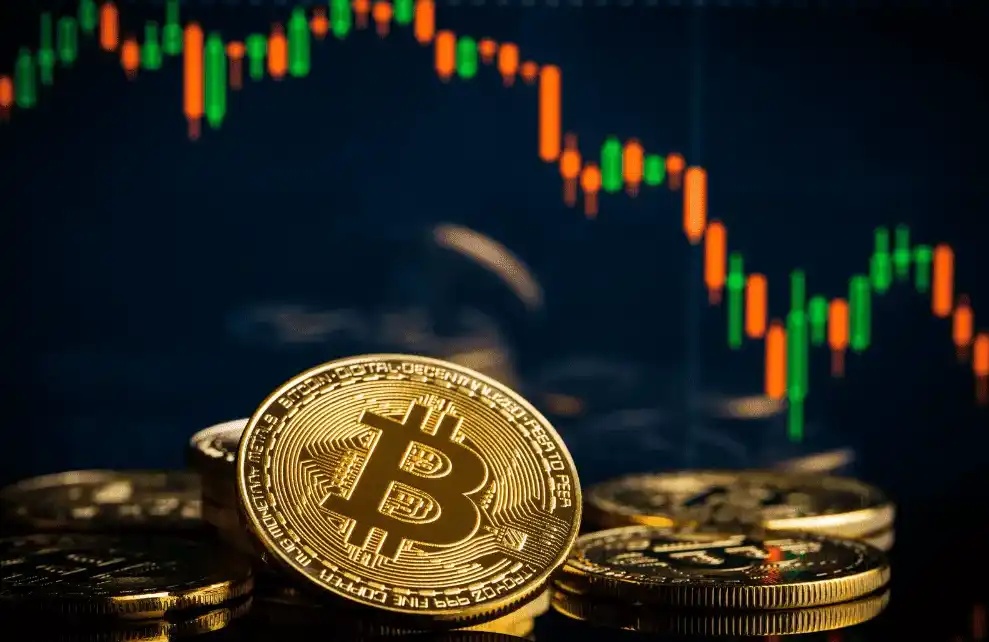2026 Outlook: These Six Major Structural Forces Are Shaping the Path for the Next Cycle
Original Article Title: Road to 2026: 6 Trends Shaping Crypto
Original Article Author: 0xJeff, AI Investor
Original Article Translation: DingDang, Odaily Planet Daily
2025 was a challenging year for the crypto industry - despite the current U.S. President's pledge to make the U.S. the global center for crypto and AI, this year's crypto market remains tough.
Since Trump took office in January, the market has experienced pressure moments time and time again, with the most deadly being the flash crash in October - that crash almost paralyzed the entire crypto industry.
While the ripple effects of this flash crash have not yet fully dissipated, the macro backdrop and industry tailwinds are pointing towards a more positive quarter and a more positive outlook for 2026.
This article will delve into 6 trends reshaping the crypto industry behind the scenes, providing you with an early preview of what 2026 might look like. Let's get started.
1. Prediction Markets = Crypto's Version of Options Finding PMF
Prediction Markets (PM) recently saw a breakthrough at the industry level, with its weekly nominal trading volume hitting a new all-time high of over $3 billion two weeks ago.
We are witnessing rapid market type expansion - political, sports, esports, pop culture, meta markets, macroeconomics, crypto, finance, earnings reports, technology, and more are all in full bloom.
@Polymarket and @Kalshi are developing in the direction of "all things are predictable," covering all popular topics; while emerging PM projects like @trylimitless and @opinionlabsxyz are digging deep in vertical niche areas - Opinion focuses on pure macro markets, providing forecasts for economic indicators such as interest rates in the U.S., EU, and Japan; Limitless focuses on crypto assets, offering markets for a wider range of coins and a richer timeframe.
Crypto options were once all the rage during the 2021 bull market, but later declined due to multiple issues, with the most critical being poor UI/UX and lack of liquidity.
Prediction markets have filled the gaps of options. They provide an extremely user-friendly interface that allows anyone with no financial knowledge to bet on any event; at the same time, by creating engaging markets to attract user participation, anyone can participate as a liquidity provider and trader (betting on both "yes" and "no"). Instead of understanding a bunch of Greek letters and complex terms, all you need to do is buy Yes or No shares.
Similar to options, users can also use prediction markets to hedge their own asset exposure.
For example:
· Received a large airdrop but want to hedge early? Go to the market and buy No.
· Your portfolio is too long? Go to the macro or BTC market and buy No.
You know.
The prediction market essentially repackages options into a more mainstream, inclusive, and profitable product, with one of the biggest beneficiaries being machine learning / prediction teams.
2. Prediction Market = Perfect Arena for Machine Learning Teams
More and more teams are doubling down on the prediction market, honing their own signals and models, such as: @sportstensor, @SynthdataCo, @sire_agent, @AskBillyBets, and more.
Sportstensor serves as Polymarket's liquidity provider layer, where any PM trader can participate in a signal competition. The best-performing signals can receive Alpha token incentives, and these signals are also fed back to Sportstensor to further strengthen its prediction models for future profits.
Synth is taking the "high-frequency hedge fund" route in the prediction market, using its own signals to predict the price of crypto assets on a 1-hour and 24-hour basis and betting in the prediction market. Initial results show a rise from $3000 to $15000 in a month, a return of 500%.
Sire is building an Alpha Vault, using Sire's model and SN44 Score data for sports predictions, with initial results exceeding 600% PnL. It is currently the best prediction market DeFi insurance vault product to be publicly released.
Billy offers analysis and automated betting tools, using the team's sports betting insights (BCS). They are exploring their advantages in Kalshi's Parlays market and planning to expand their strategy and treasury size (future profits will be redistributed to token holders once the treasury size reaches a threshold).
The attractiveness of prediction markets lies in their natural nurturing of multiple scenarios similar to a "Darwinian AI competition," where ML teams can prove their strategies in a real market environment.
Synth, Sire, and Billy can all participate in Sportstensor's competition, and soon they can also take part in the War of Markets planned by @aion5100 and @futuredotfun on Polymarket and Kalshi.
What's even cooler is that Polymarket is about to launch the Poly token, and new PM projects are also attracting liquidity and volume through token incentives. Machine learning teams can both find mispricing, engage in arbitrage, and conveniently earn token incentives.
Doesn't this remind you of the early days of Hyperliquid?
A similar thing is happening again, except this time in the prediction market, not in perpetual contracts.
3. Neobank War Begins
We are witnessing a key shift: large Web2 startups and enterprises are launching L1/L2 solutions, integrating stablecoin payment rails to directly serve users. At the same time, crypto-native projects are advancing into real-world financial services.
Teams like @ether_fi, @useTria, @AviciMoney, @UR_global now offer non-custodial crypto debit cards, allowing users to directly spend on-chain assets in the real world.
In just one year, this market has shifted from a blue ocean to a crowded battlefield, with 20–30 heavyweight players competing for the same batch of crypto users.
The current differentiators are mainly focused on:
· Cashback/Rebate Ratio: Tria offers the highest cashback but requires an annual fee
· Exchange Rates, Transfers, ATM Fees
· Benefits System (travel, hotel tiers, airport lounges, events)
· Earn/DeFi Integration (idle fund yield, lending for consumption): EtherFi leads in this area, offering high yields + lending for consumption
However, most products have similar underlying structures. They rely on partner banks/issuers holding Visa/Mastercard licenses, making them more like "user acquisition gateways" rather than true neobanks.
Therefore:
· Compliance is managed by partner banks, not the project itself
· Users' balances are held in virtual accounts, not real bank accounts
· Functionality typically stops at "crypto spending," lacking a full-fledged fiat off-ramp or banking services
Currently, everyone is subject to these limitations, so the impact is minimal. However, as competition intensifies, whoever can become a "true bank" will have a core advantage. Projects that can control their own compliance and regulatory framework will be able to offer real bank accounts, multi-currency on/off ramps, and achieve seamless integration between crypto and traditional finance.
In this regard, UR (from the Mantle ecosystem) is one step ahead, currently operating under FINMA regulation, holding Swiss banking licenses, supporting seven fiat currencies, and simultaneously supporting real-world and crypto financial services (such as traditional bank system transfers across seven currencies).
4. Breakthrough Applications in the Crypto Industry Are More Evident Than Ever
· Transactions
· Prediction
· DeFi Yield
· Stablecoins
· Asset Tokenization
We have transitioned from CEX to Spot DEX to Perpetual DEX, all the way to the era of Hyperliquid.
The "super speculative Launchpad" trend led by Pumpdotfun has sparked a wave of narrative-driven on-chain launch platforms.
The rapid development of prediction markets has truly reached mainstream users for the first time (since the NFT era, we have never seen such viral spread, and this time people really like the product).
DeFi is expanding into structured yield, interest products, stablecoins, RWA/DePIN, asset tokenization, and other areas on Wall Street, where people realize they can "own a piece of the future" and earn returns on it (even using it as collateral to borrow money).
All key crypto applications are being further amplified: CEXs are launching super apps such as Base App, Binance, OKX, and other wallets are rapidly expanding their capabilities to make it easier for the average user to get started.
ICOs are making a comeback—Coinbase has launched the first Monad ICO, and other platforms (Legion, Kaito) are also growing rapidly.
5. Crypto AI Finds PMF
Crypto AI was early on dominated by a slew of AI Meme coins and GPT fork projects, self-styled as "AI Agents," but now that noise has exited.
Today, blockchain payments and stablecoins underpin automated trading between agents; cryptographic technologies such as TEE, ZK, along with token incentives and penalty mechanisms, render AI systems verifiable, controllable, and predictable.
The support layer (e.g., x402, ERC-8004, programmable wallets, billing frameworks, verifiable reasoning/computation) is laying the foundation for "seamless AI-human collaboration" (infra that allows AI and humans to seamlessly transact and collaborate anytime, anywhere, providing guardrail mechanisms to prevent AI from running away).
Meanwhile, "Darwinian AI" is rising as a meta-layer competition, driving agent evolution through real incentives, optimizing signals, and improving performance. The most successful use cases currently remain in trading and predictive signals, highly aligned with the genetic makeup of the crypto industry.
More ecosystems are adopting this Darwinian model, using token incentives to attract developers, reward contributors, subsidize R&D, and drive higher-quality AI products. While still early, some of Bittensor's subnets are already showing promising signs.
Nevertheless, the token performance of the majority of Crypto AI projects has not yet synchronously reflected these advancements—many projects are still down 30-90% from TGE prices, even as they deliver real infrastructure and tangible utility.
6. DeFi Enters the Era of "Dynamic DeFi"
DeFi has long been a core pillar of the crypto industry, with TVL exceeding $130 billion, spanning DEXes, lending, yield products, and stablecoins.
The strength of DeFi lies in its programmability, verifiability, and high composability, with top protocols being among the most battle-tested systems in the whole industry. However, over the past five years, the underlying mechanics of DeFi have remained largely unchanged, e.g., centralized liquidity provisioning or lending mechanisms are relatively static.
But now imagine: What if new DeFi protocols could automatically leverage/deleverage based on the predicted price of the underlying asset, auto-rebalance LP positions, auto-enter/exit markets? What would that look like?
This is the dawn of the "Dynamic DeFi" era, driven by AI and machine learning.
Machine Learning-Enhanced DeFi
@AlloraNetwork is a key player, collaborating with top protocols to inject machine learning intelligence into traditional DeFi:
· Machine Learning-Driven Concentrated LP Strategy
· Dynamic Leverage Management
· Yield Optimization Based on Forward-Looking Risk Signals
These forecasts and signals are generated by the Allora Inference Network, where AI/ML engineers can contribute models and earn token rewards through a Darwinian incentive mechanism that rewards better-performing models.
AI-Generated and AI-Managed DeFi Strategies
@gizatechxyz and @almanak are also driving a new class of products:
· Giza is an AI asset manager that intelligently allocates funds across multiple DeFi protocols
· Almanak enables AI agents to deploy tokenized strategy vaults in minutes, making it both a fund allocator and a strategy creator platform. This allows Almanak to serve as both a capital allocator, bringing TVL to DeFi projects, and a fund manager's vault creation platform.
As TradFi and DeFi become more deeply integrated, with machine learning enhancing DeFi's core value and risk management, and AI designing more sophisticated strategies, we may see a faster pace of DeFi expansion in 2026, ushering in a more intelligent, autonomous, and adaptive layer of internet finance.
What's Next?
In 2026, we may see multiple narratives converging—Crypto, AI, DeFi, RWA, DePIN, robots, etc., coming together to form an interoperable digital economy operated by both humans and agents.
· DeFi becoming more dynamic
· AI driving DeFi expansion to more users
· Increased adoption of crypto payment rails, stablecoins, and key applications
· Neobanks integrating Web2 and Web3
· Continued growth in the prediction market space, with machine learning teams as a core component
Natural selection accelerates, with only a few assets truly appreciating in value.
Crypto projects are more likely to choose an IPO over an ICO to obtain liquidity, compliance, and scale through traditional capital markets.
Next cycle = The deep integration cycle of TradFi and DeFi.
Welcome to join the official BlockBeats community:
Telegram Subscription Group: https://t.me/theblockbeats
Telegram Discussion Group: https://t.me/BlockBeats_App
Official Twitter Account: https://twitter.com/BlockBeatsAsia


 Forum
Forum Finance
Finance
 Specials
Specials
 On-chain Eco
On-chain Eco
 Entry
Entry
 Podcasts
Podcasts
 Activities
Activities
 OPRR
OPRR









